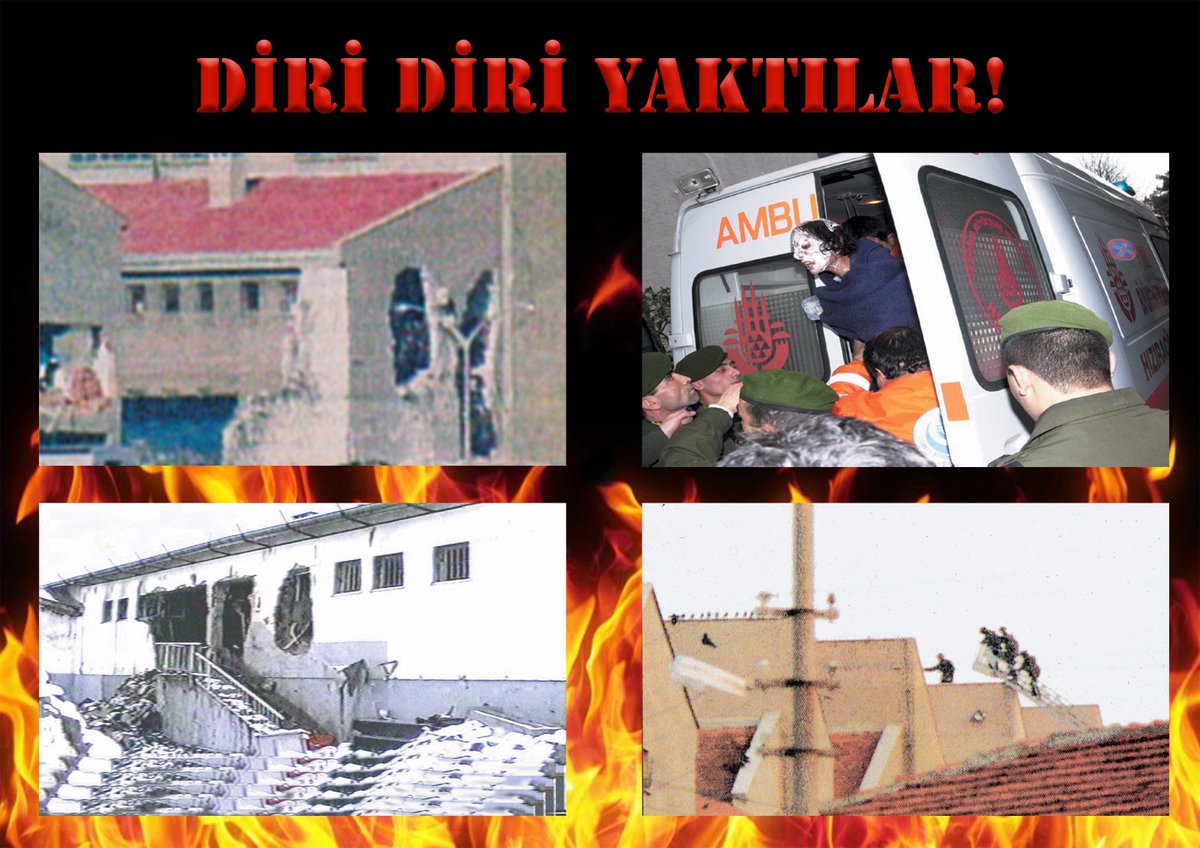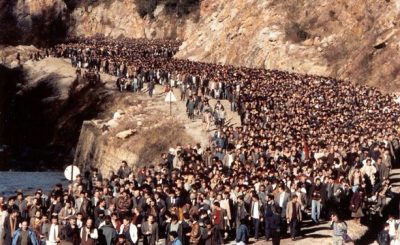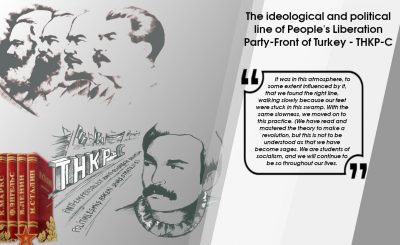Between 19 and 22 December 2000, one of the bloodiest pages in the history of Turkey was written. Our blood was shed, the blood of the people. This blood was shed in the name of the IMF, in the name of the interests of US imperialism. Those who shed blood were the rulers of Turkey. This was the first step of the plan for destroying the Death Fast resistance, and to crush the entire opposition.
A total of 8,335 gendarmes, deployed in 8 battalions or 37 companies for special operations, took part in the attacks on 20 prisons across Turkey between 19 and 22 December 2000. They were assigned to the following ranks: 191 officers, 432 non-commissioned officers, 392 special sergeants, 281 specialist sergeants, 7,080 privates.
They go through special training for 1 year for this operation. Various specialized units of the gendarmerie and the police conducted joint and separate exercises during this period of training.
The operation involved many specialized units from different parts of the country. Thousands of policemen from the riot police squads and prison guards also took part in the operation as an “additional force”. Sikorsky UH-60 Black Hawk helicopters were used in the raids on the Bayrampaşa and Ümraniye prisons in Istanbul, as well as near Çanakkale. 20,000 grenades with different types of chemicals and gases were used, and 5,048 of these grenades were used in the prison near the city of Çanakkale in western Turkey alone. During the operation a special gas was used, the ingredients of which are unknown to this day. This gas does not burn the clothes of the political prisoners, but when it comes in contact with their skin, they get extremely severe burns that were caused by it.
This is the largest military operation in the history of Turkey since the intervention in Northern Cyprus in 1974.
In this massacre, 28 revolutionaries were brutally killed, and hundreds more were wounded and thrown into the cells of F-type prisons. The attack aimed at breaking the revolutionaries continued in the cells. Inhuman treatment, deprivation of rights, arbitrary punishment, severe isolation, torture…
Those who were massacred were the leaders of the people in the struggle against imperialism and oligarchy. Before the massacre, the then Prime Minister Bulent Ecevit repeatedly stated that without resolving the problem of prisons in Turkey, IMF policies could not be implemented. That means until the revolutionary movement was not crushed until the revolutionaries were not annihilated, and the people were not defeated, a “stable” country could not be presented to the imperialists, in which they could do whatever they wished undisturbed by anyone.
Major Zeki Bingöl, who personally took part in the operation, openly acknowledged this, saying: “The operation was done to break and bring the left, back within the status quo, and to destroy DHKP-C.”[1]
The massacre of December 19-22 was carried out so that the lands, waters, forests, mountains, or in short, an entire country could be sold to the IMF. It was carried out to destroy the Party-Front, which was the only anti-imperialist force capable to oppose the policies of imperialism that were later implemented in the Middle East and the rest of the world.
This massacre was carried out to destroy the strongest fighting vein in the lands of Anatolia, the only force carrying the flag of the Marxist-Leninist ideology of the peoples of the world, and to leave no trace of the revolutionaries in these lands. Because of all this, the revolutionaries thrown into the prisons of the oligarchy built barricades to protect the peoples. They perished but did not surrender. Against this attack on the people and our homeland, they built barricades with their bodies.
20 years have passed since this massacre. Despite all its attacks, imperialism has failed to break the peoples of Anatolia. The imperialists cannot walk around Anatolia freely, they are afraid. They are afraid because there are still people who are fighting and resisting.
The epic of resistance created in prisons between December 19 and 22, 2000, continues to live on today, both in F-type isolation prisons and in slums, and on the country’s streets and squares.
Because in the lands of Anatolia, the revolutionaries never surrendered to imperialism and oligarchy. Despite the scale and intensity of the attacks of imperialism and oligarchy, the revolutionaries continued to fight regardless of the conditions in which they were placed and they did not surrender. They did not make any concessions to their ideals and values, they did not bow their heads to the enemy.
Footnotes:
1- DHKP-C – Revolutionary People’s Liberation Party-Front, is a Marxist-Leninist revolutionary organization which’s roots can be traced back to the People’s Liberation Party-Front of Turkey (THKP-C), founded in 1970 by the revolutionary leader and Marxist theorist Mahir Çayan.



